Filter by
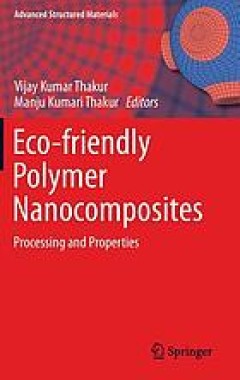
Eco-friendly polymer nanocomposites : chemistry and applications
This book contains precisely referenced chapters, emphasizing environment-friendly polymer nanocomposites with basic fundamentals, practicality and alternatives to traditional nanocomposites through detailed reviews of different environmental friendly materials procured from different resources, their synthesis and applications using alternative green approaches. The book aims at explaining bas…
- Edition
- -
- ISBN/ISSN
- 9788132224730
- Collation
- -
- Series Title
- -
- Call Number
- 540

Ecological continuum from the Changjiang (Yangtze River) watersheds to the Ea…
The book provides a cross-disciplinary and multi-scale assessment of a world top river, the Changjiang (Yangtze River) and its adjacent marginal environment, the East China Sea. The studies in this volume bridges the watersheds of the river and the marginal sea through a combined approach of hydro-dynamics, geochemistry, sedimentary processes, ecology and fishery. The response of ecosystem to t…
- Edition
- -
- ISBN/ISSN
- 9783319163390
- Collation
- xiv, 201 pages
- Series Title
- -
- Call Number
- 577

Ecological impacts of tsunamis on coastal ecosystems : lessons from the Great…
This book focuses on the ecological impacts of the Great East Japan Earthquake and resulting tsunamis, a rare and extremely large disturbance event, on various coastal ecosystems in Japan's Tohoku area, including sub-tidal and tidal animal communities, sand dune plant communities and coastal forests. The studies presented here describe not only how species and populations in these ecosystems we…
- Edition
- -
- ISBN/ISSN
- 9784431564485
- Collation
- xi, 410 pages
- Series Title
- -
- Call Number
- 577.51

Ecology and conservation of mountaintop grasslands in Brazil
This book is a pioneer attempt to bring forward the first synthesis on the most diverse and threatened mountain top vegetation of South America, the rupestrian grasslands. It brings to light the state of the art information on this ecosystem geology, soil formation and distribution, environmental filters that lead to biodiversity, species interactions and their fine tuned adaptations to survive…
- Edition
- -
- ISBN/ISSN
- 9783319298085
- Collation
- xxiii, 567 pages
- Series Title
- -
- Call Number
- 578.7
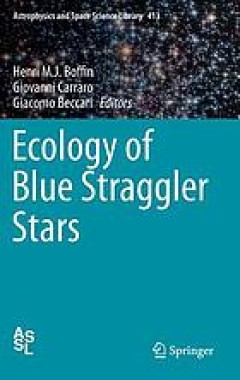
Ecology of blue straggler stars
The existence of blue straggler stars, which appear younger, hotter, and more massive than their siblings, is at odds with a simple picture of stellar evolution. Such stars should have exhausted their nuclear fuel and evolved long ago to become cooling white dwarfs. They are found to exist in globular clusters, open clusters, dwarf spheroidal galaxies of the Local Group, OB associations and as …
- Edition
- -
- ISBN/ISSN
- 9783662444344
- Collation
- -
- Series Title
- -
- Call Number
- 523.8

Multivariable Calculus
This book covers the standard material for a one-semester course in multivariable calculus. The topics include curves, differentiability and partial derivatives, multiple integrals, vector fields, line and surface integrals, and the theorems of Green, Stokes, and Gauss. Roughly speaking the book is organized into three main parts corresponding to the type of function being studied: vector-value…
- Edition
- -
- ISBN/ISSN
- -
- Collation
- -
- Series Title
- -
- Call Number
- 515 SHI m
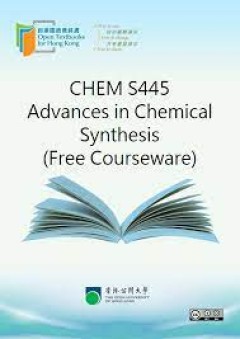
Advances in Chemical Synthesis
Organic chemistry belongs to a branch of chemistry that is generally associated with compounds containing carbon. It is so important because millions of compounds that contain carbon are related to our daily lives, so organic chemistry has many close connections with living things. For examples, amino acids can react together to form proteins, which help constitute the essential compounds of …
- Edition
- -
- ISBN/ISSN
- -
- Collation
- -
- Series Title
- -
- Call Number
- 540 OPE a
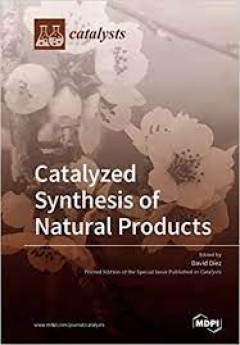
Catalyzed Synthesis of Natural Products
Natural products have been a source of inspiration for chemists and chemical biologists for many years, and have a special relevance in the chemical space. In recent years, several novel synthetic strategies have appeared, such as diversity-oriented synthesis (DOS), biological-oriented synthesis (BiOS), and function-oriented synthesis (FOS), for accessing complex and functionally diverse molecu…
- Edition
- -
- ISBN/ISSN
- 978-3-03921-949-0
- Collation
- -
- Series Title
- -
- Call Number
- 547 CAT
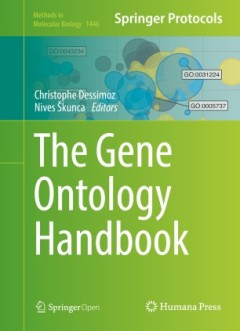
The Gene Ontology Handbook
The Gene Ontology (GO) is the leading project to organize biological knowledge on genes and their products in a formal and consistent way across genomic resources. This has had a profound impact at several levels. First, such standardization has made possible the integration of multiple resources and sources of knowledge, thereby increasing their discoverability and simplifying their usage. S…
- Edition
- -
- ISBN/ISSN
- 978-1-4939-3743-1
- Collation
- -
- Series Title
- Methods in Molecular Biology 1446
- Call Number
- 570 DES g
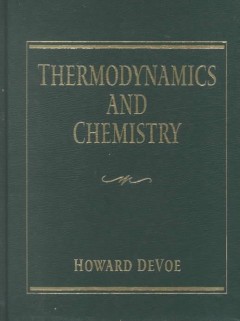
Thermodynamics and Chemistry
Thermodynamics and Chemistry is designed primarily as a textbook for a one-semester course in classical chemical thermodynamics at the graduate or undergraduate level. It can also serve as a supplementary text and thermodynamics reference source.
- Edition
- -
- ISBN/ISSN
- -
- Collation
- -
- Series Title
- -
- Call Number
- 540 DEV t
 Computer Science, Information & General Works
Computer Science, Information & General Works  Philosophy & Psychology
Philosophy & Psychology  Religion
Religion  Social Sciences
Social Sciences  Language
Language  Pure Science
Pure Science  Applied Sciences
Applied Sciences  Art & Recreation
Art & Recreation  Literature
Literature  History & Geography
History & Geography